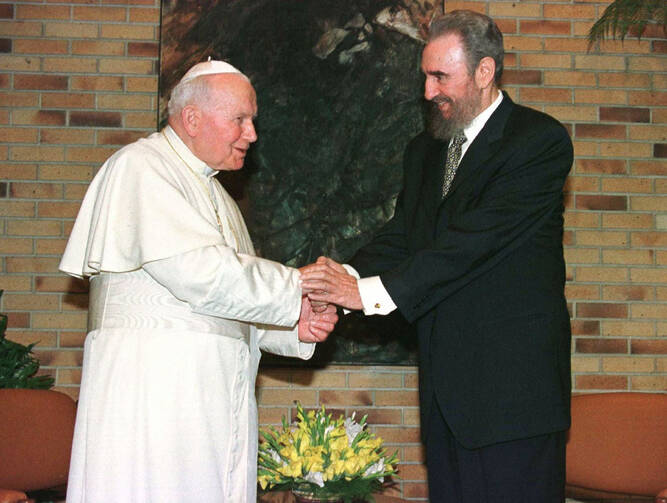Archbishop Thomas G. Wenski of Miami was one of the first Catholic Church officials to respond on Nov. 26 after the death of Fidel Castro. “The death of this figure should lead us to invoke the patroness of Cuba, the Virgin of Charity, calling for peace for Cuba and its people,” he said in a statement. Later that day at Ermita de la Caridad, a Miami shrine that honors Cuba’s patron, Our Lady of Charity of El Cobre, he said, “The Cuban people are a noble people but also a people who suffer.” Referring to recent moments in the history of the island, when Catholics hid their faith fearing persecution by a government and a society that looked down on religion, he said the Virgin was present in the prayer cards people hid in their dressers and present with those inside and outside Cuba who “fight for respect for human dignity and to establish a future of freedom, justice and peace.”
Post-Castro Church
Show Comments (
)
Comments are automatically closed two weeks after an article's initial publication. See our comments policy for more.
The latest from america
In these dark times, surrounded by death and destruction in Gaza, we hear the command in the first reading, “Choose life.” What are the ways we can do this in a world that seems to have gone mad?
On July 31, Pope Leo XIV announced that St. John Henry Newman, English theologian, educator, and writer who converted to Catholicism after being an Anglican priest, will be named a Doctor of the Church.
The chair of the USCCB Committee on International Justice and Peace put out a statement on July 31 demanding more humanitarian action for those in Gaza.
Latin Mass, Eucharistic Revival, real presence: In every age—including our own—the church has seen a complex Eucharistic landscape.








